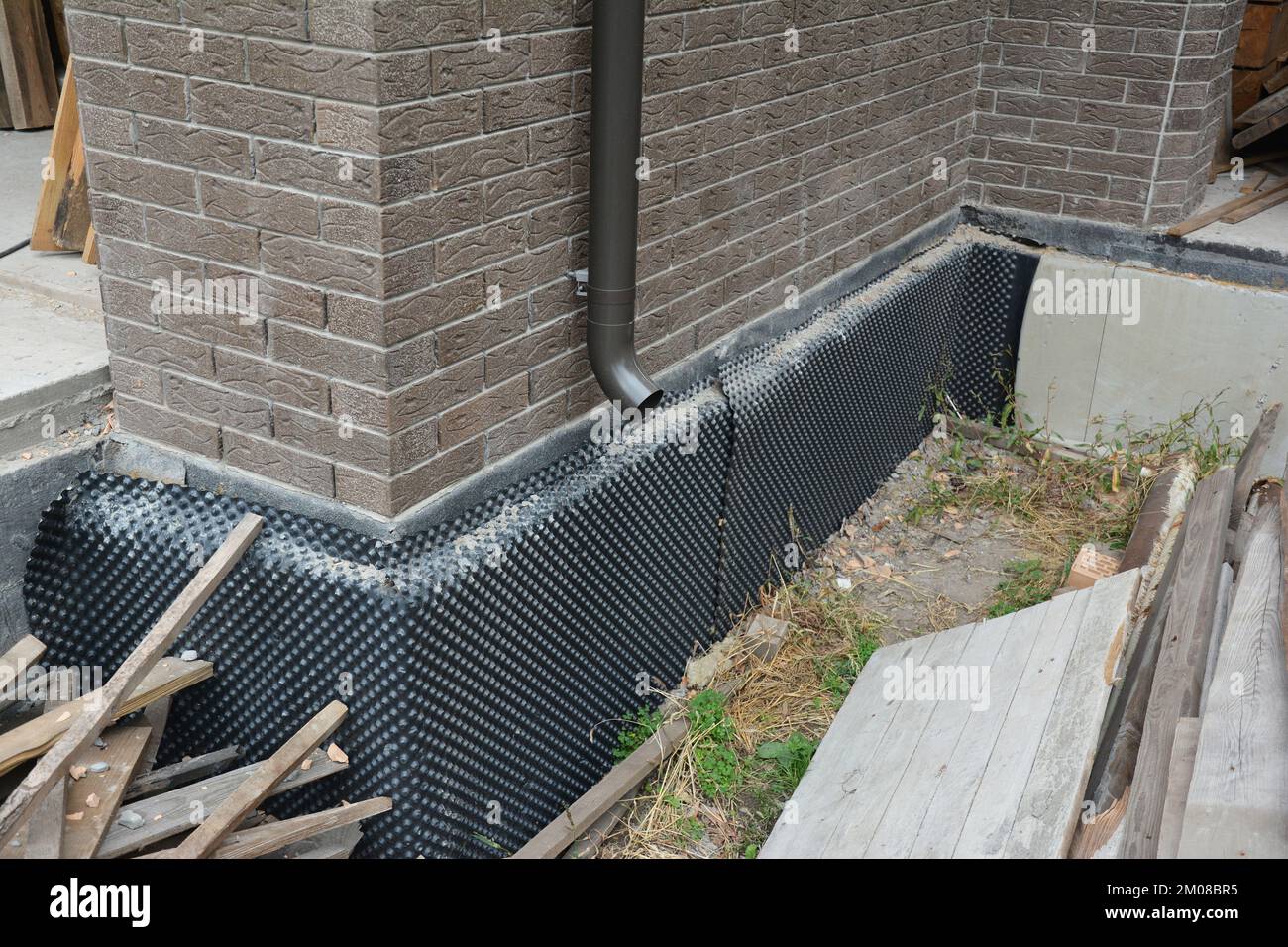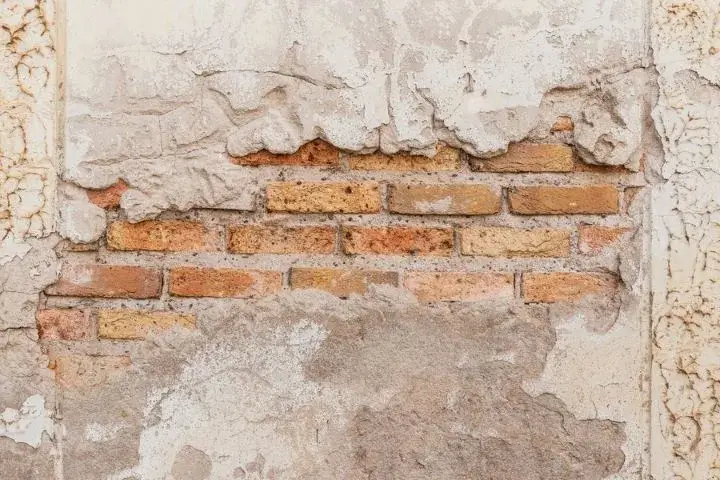Common signs you need damp proofing newcastle services now
Common signs you need damp proofing newcastle services now
Blog Article
Checking Out the Various Strategies and Solutions for Effective Damp Proofing
Dampness in structures presents substantial obstacles to both architectural honesty and indoor air quality. Different techniques and services have arised to battle this prevalent issue. From standard damp-proof membrane layers to cutting-edge chemical treatments, each method provides one-of-a-kind benefits. Understanding these options is necessary for reliable dampness control. Picking the best solution depends on specific structure problems and requirements, motivating further expedition right into the most efficient damp proofing approaches available.
Understanding the Sources Of Wetness
Although moisture can occur from various sources, comprehending these reasons is important for effective removal. Frequently, dampness stems from 3 key sources: increasing moist, penetrating wet, and condensation. Increasing wet happens when groundwater travels up via porous products, such as brick or rock, typically because of an absence of an effective obstacle (damp specialist newcastle). Permeating wet is normally brought on by external factors, consisting of roofing leaks, malfunctioning gutters, or harmed walls, enabling water to penetrate a home. Condensation, on the other hand, results from excess dampness in the air, often aggravated by poor ventilation and temperature level differences, causing water beads developing on surface areas. Recognizing these underlying issues is necessary, as each kind of dampness calls for a customized approach for remediation. Appropriate analysis helps in establishing one of the most efficient options, inevitably safeguarding the structural stability of a structure and enhancing indoor air high quality
Standard Damp-Proof Membrane Layers

Chemical Damp-Proofing Solutions
Chemical damp-proofing options supply a cutting-edge method to preventing dampness breach in structures. These techniques generally entail the application of liquid chemicals that permeate stonework and form an obstacle versus rising moist. Commonly utilized chemicals consist of silanes, siloxanes, and various other water-repellent agents that respond with surface products to produce a hydrophobic layer.The application process normally calls for drilling holes right into the wall surfaces, injecting the chemical service, and permitting it to treat. This method is specifically helpful for older frameworks where typical damp-proof membranes might be impractical. Chemical damp-proofing can be much less disruptive and much more affordable than extensive improvement projects.While effective, these services depend on proper application and ecological problems for peak efficiency. damp removal newcastle. Regular upkeep and surveillance are necessary to guarantee the longevity of the damp-proofing treatment. In general, chemical damp-proofing represents a versatile choice for safeguarding structures versus moisture-related damages
Cavity Wall Construction Techniques
Dental caries wall surface building techniques offer numerous benefits, especially in moisture control and energy performance. By integrating an air gap in between 2 layers of masonry, these wall surfaces successfully reduce water ingress while boosting insulation. This mix not only protects frameworks from dampness however also adds to reduced energy intake.
Advantages of Cavity Walls
When thinking about efficient moist proofing techniques, the benefits of cavity walls stand out plainly. Cavity wall surfaces include two different layers, creating an air space that successfully minimizes wetness penetration. This style minimizes the danger of dampness, as the external wall functions as an obstacle against rainfall and water access. Additionally, dental caries walls improve thermal insulation, which adds to energy effectiveness by lowering heat loss. They likewise provide audio insulation, assisting to produce a quieter indoor environment. The air void enables for ventilation, which assists in moisture control and decreases the possibility of mold and mildew growth. These benefits not only enhance the general convenience of a building yet also contribute to its durability and architectural stability.
Dampness Control Approaches
Reliable wetness control techniques are important in cavity wall surface building to guarantee long-lasting security versus dampness. One primary technique includes the consolidation of weep holes, which promote water drain from the cavity, preventing build-up. Additionally, using breathable membranes can assist manage dampness degrees while enabling caught vapor to run away. Appropriate positioning of insulation is also critical, as it must not block drain courses. Furthermore, ensuring that the outer fallen leaves of the cavity wall are created with waterproof materials improves total toughness. Normal maintenance checks are necessary to recognize any obstructions or damage early, securing the framework's honesty. Ultimately, a combination of these strategies forms a robust defense against wetness invasion in dental caries wall surfaces.
Insulation and Power Effectiveness
Insulation plays an essential role in improving power efficiency within tooth cavity wall building. By incorporating protecting products, these wall surfaces develop a thermal obstacle that decreases warmth loss and reduces power consumption. Effective insulation not only helps preserve a secure interior temperature yet additionally minimizes the threat of wetness, as it protects against condensation within the wall tooth cavity. Various strategies, such as using stiff foam boards or mineral wool, can be utilized to achieve ideal insulation performance. Additionally, correct setup is necessary to assure that voids and spaces are lessened, which can otherwise compromise power efficiency. Ultimately, a well-insulated dental caries wall surface contributes greatly to total sustainability and decreases heating & cooling prices for house owners.
External Damp Proofing Approaches
Outside damp proofing techniques are important for safeguarding structures from wetness infiltration. Two reliable methods consist of the application of water resistant membranes and the installment of French drains. These solutions assist mitigate water build-up and preserve the honesty of buildings.
Waterproof Membrane Layer Application
While various techniques exist for preventing wetness access, the application of waterproof membranes remains an extremely efficient external damp proofing method. These membranes are usually made from products such as polyethylene, rubber, or modified asphalt, providing a robust obstacle versus water penetration. The setup procedure entails using the membrane to the exterior surfaces of foundations or walls, making sure full coverage to stop leakages. Correct attachment and securing at joints are important to taking full advantage of performance. Water-proof membranes can be used in different types, consisting of fluid coatings and sheet membranes, allowing for flexibility based on the particular needs of the framework. This approach not just shields structures from wetness yet additionally enhances their durability and structural integrity.
French Drainpipe Installment
One reliable technique for taking care of groundwater and preventing moisture buildup around a structure's foundation is the setup of a French drain. This water drainage system is composed of a trench filled up with crushed rock and a perforated pipe that redirects surface water far from the structure. Correct setup needs mindful planning, making sure that the drain inclines far from the framework to assist in excellent water flow. Furthermore, the area of the drainpipe is important; it should be placed in areas prone to merging or excess wetness. Regular upkeep, including clearing up debris from the gravel and making certain the pipeline stays unobstructed, is necessary for long-term effectiveness. Eventually, a well-installed French drain can considerably reduce the threat of water-related concerns in structures and basements.
Inside Waterproofing Strategies
Interior waterproofing approaches are essential for safeguarding a structure's interior from wetness seepage and potential water damage. These approaches usually entail the application of specialized materials and methods made to create a wetness obstacle within the framework. One common technique is making use of water resistant finishings or sealers on walls and floors, which protect against moisture from permeating surfaces.Additionally, mounting indoor drainage systems, such as sump pumps, can effectively manage water build-up in cellars and creep rooms. An additional approach involves the use of vapor barriers, which are mounted to prevent dampness movement from the ground right into living spaces.Moreover, attending to any kind of splits or voids in wall surfaces or structures with appropriate sealants guarantees an extensive protection against water invasion. By carrying out these interior waterproofing approaches, homeowner can considerably lower the risk of mold growth, structural damage, and various other moisture-related concerns. Appropriate execution of these techniques is necessary for lasting security and structure stability.
Routine Maintenance and Evaluation Practices
Normal maintenance and assessment methods are important for assuring the long-term effectiveness of damp proofing remedies in any kind of structure. Regular checks enable homeowner to identify very early indications of dampness invasion, such as peeling off paint, mold and mildew growth, and stuffy odors. These indications can indicate underlying issues that call for immediate attention.Inspections need to be carried out a minimum of annually, concentrating on vulnerable locations like basements, creep spaces, and outside walls. Throughout these analyses, residential or commercial property proprietors must take a look at sealers, drain systems, and air flow to confirm they operate correctly.Additionally, preserving seamless gutters and downspouts is essential, as stopped up systems can bring about water build-up near the structure. Implementing a routine upkeep schedule, together with prompt repairs, can significantly extend the lifespan of moist proofing actions and protect the structural honesty of the structure. Aggressive steps eventually add to the overall health and security of the living atmosphere.
Often Asked Inquiries
How Much Time Does Damp Proofing Usually Last?
The duration of moist proofing efficiency differs, normally lasting in between 20 to half a century. Variables such as application top quality, ecological problems, and upkeep techniques greatly influence the longevity of the damp proofing treatment.

Can I Damp Evidence My Home Myself?
The specific pondered the usefulness of do it yourself damp proofing. With correct research and the right materials, it is possible. However, they additionally acknowledged the significance of specialist assistance to guarantee lasting efficiency and stop future problems.
What Are the Indicators of Inefficient Damp Proofing?
Indications of ineffective damp proofing consist of consistent moldy smells, noticeable mold development, peeling off paint, damp spots on walls, and wood degeneration - damp specialist newcastle. House owners ought to address these concerns without delay to stop additional damage and wellness worries
Does Damp Proofing Affect Indoor Air Quality?

Exactly How Much Does Specialist Damp Proofing Price?
Specialist damp proofing expenses vary significantly, normally varying from $1,000 to $5,000 depending upon the home's dimension, the extent of the damp problem, and picked techniques. Each scenario requires a tailored analysis for exact pricing. Frequently, wetness originates from three main resources: increasing wet, penetrating moist, and condensation. When taking into consideration effective more info wet proofing methods, the advantages of tooth cavity wall surfaces stand out plainly. Exterior damp proofing methods are vital for protecting structures from wetness seepage. While different approaches exist for avoiding moisture ingress, the application of water resistant membranes stays an extremely reliable exterior wet proofing technique. Indications of inefficient wet proofing include persistent musty odors, noticeable mold and mildew growth, peeling paint, damp spots on wall surfaces, and wood decay.
Report this page